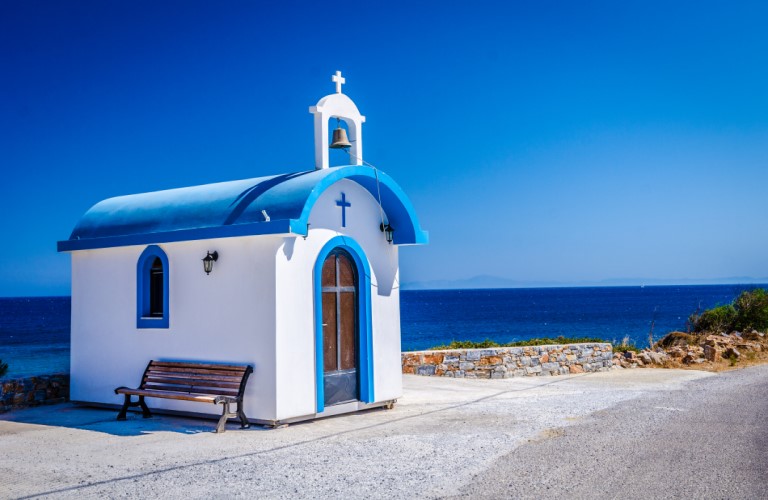
What to Wear in Greece: A Guide to Dressing Stylishly.
Greece is a destination that combines stunning natural beauty, rich historical heritage, and vibrant modern culture. From the ancient ruins of Athens to the picturesque villages of Santorini, Greece offers a diverse range of experiences that call for thoughtful and practical clothing choices. This comprehensive guide will help you navigate the fashion and practical considerations for every season and occasion, ensuring that you dress both stylishly and appropriately during your visit to Greece. Mediterranean Cruises Greece
- Understanding Greece’s Climate
Greece's climate can significantly influence your wardrobe choices. With a Mediterranean climate featuring hot, dry summers and mild, wet winters, different seasons require distinct clothing strategies.
1.1. Mediterranean Climate Overview
- Summer (June to August): Hot and dry, with temperatures often exceeding 30°C (86°F). Coastal areas benefit from cooling sea breezes, but inland regions can be significantly hotter.
- Spring (March to May) and Fall (September to November): Mild and pleasant, with temperatures ranging from 15°C to 25°C (59°F to 77°F). These transitional seasons are ideal for layering.
- Winter (December to February): Mild in coastal regions, with temperatures ranging from 10°C to 15°C (50°F to 59°F), but colder in inland and mountainous areas, where temperatures can drop below freezing.
1.2. Regional Differences
- Coastal Areas: Generally warmer with more consistent temperatures, requiring lighter clothing in summer and warmer layers in winter.
- Inland and Mountainous Regions: Experience more pronounced seasonal changes, with cooler temperatures and potential snowfall in winter.
- Seasonal Wardrobe Essentials
2.1. Spring (March to May)
Weather: Spring in Greece is marked by mild temperatures and occasional rain. The landscape is lush and blooming, making it a beautiful time to explore the country.
Wardrobe Essentials:
- Lightweight Layers: Pack lightweight sweaters, cardigans, and long-sleeve shirts that can be layered over t-shirts. This allows you to adapt to fluctuating temperatures.
- Comfortable Pants and Skirts: Opt for breathable fabrics like cotton or linen. Light trousers, jeans, and skirts are versatile choices.
- Waterproof Jacket: A lightweight, waterproof jacket is essential for unexpected rain showers.
- Comfortable Footwear: Walking shoes or sneakers are ideal for exploring cities and historical sites.
- Accessories: Bring a hat and sunglasses for sunny days, and a scarf for cooler evenings.
Style Tips:
- Opt for Soft Colors: Pastel shades and floral prints reflect the season’s blooming nature.
- Layer Wisely: Combine layers to adjust to changing temperatures throughout the day.
2.2. Summer (June to August)
Weather: Summer in Greece is hot and dry, with temperatures often soaring above 30°C (86°F). Coastal breezes provide some relief, but inland areas can be sweltering.
Wardrobe Essentials:
- Lightweight Fabrics: Choose breathable materials like cotton, linen, and light blends. Shorts, sundresses, and lightweight shirts are ideal.
- Swimwear: Pack multiple swimsuits if you plan to visit beaches or pools. Consider a cover-up or sarong for beachside dining.
- Sun Protection: A wide-brimmed hat, sunglasses, and sunscreen are crucial for sun protection.
- Comfortable Sandals: Opt for open-toe sandals or flip-flops for beach days and casual outings.
- Evening Wear: Light, airy dresses or linen pants with a stylish top work well for evening dinners and outings.
Style Tips:
- Bright and Breezy: Embrace bright colors, tropical prints, and flowing silhouettes to stay cool and stylish.
- Sun Protection: Choose clothing with UV protection for added sun safety.

2.3. Fall (September to November)
Weather: Fall offers mild temperatures with occasional rainfall, making it a great time for travel. The weather is pleasant, and the tourist crowds are smaller.
Wardrobe Essentials:
- Layered Clothing: Pack a mix of light sweaters, long-sleeve shirts, and lightweight jackets. Layering allows you to adjust to varying temperatures.
- Comfortable Pants and Jeans: Versatile options like jeans, chinos, and leggings work well.
- Rain Gear: A light rain jacket or umbrella is handy for occasional showers.
- Comfortable Shoes: Walking shoes or boots are ideal for exploring cities and countryside.
Style Tips:
- Earth Tones: Opt for warm, earthy colors like brown, olive, and rust, reflecting the fall season.
- Layering: Combine layers for flexibility in changing weather conditions.
2.4. Winter (December to February)
Weather: Winter temperatures are mild along the coast but can be cold inland and in mountainous regions, with potential snowfall.
Wardrobe Essentials:
- Warm Layers: Pack thermal shirts, sweaters, and a good-quality winter coat for colder areas. Layering is key for varying temperatures.
- Warm Pants and Boots: Insulated pants and waterproof boots are essential for colder regions and potential snow.
- Accessories: Bring a hat, gloves, and a scarf to stay warm. A good pair of warm socks is also recommended.
- Indoor Wear: Comfortable indoor clothing like sweatshirts and leggings will keep you cozy.
Style Tips:
- Layer and Insulate: Layering is important for staying warm, especially in colder inland areas.
- Neutral Colors: Stick with neutral, darker colors for winter attire, which are practical and stylish.
- Dressing for Specific Activities
3.1. Historical Site Visits
Clothing Tips:
- Comfortable and Modest: Choose comfortable, modest clothing that allows for easy movement. Avoid overly revealing attire, especially when visiting religious or cultural sites.
- Comfortable Shoes: Opt for comfortable walking shoes or sneakers, as you’ll likely be on your feet for extended periods.
Style Tips:
- Casual and Practical: Practical, casual outfits work best. Think comfortable pants or shorts and breathable tops.
- Sun Protection: Wear a hat and sunglasses, and use sunscreen to protect yourself from the sun.
3.2. Beach Days
Clothing Tips:
- Swimwear: Bring multiple swimsuits for beach days. Pack a beach cover-up or sarong for easy transitions from beach to lunch.
- Beach Accessories: Include a wide-brimmed hat, sunglasses, and a beach bag for essentials.
Style Tips:
- Bright and Fun: Embrace vibrant colors and fun prints. Light, airy fabrics and comfortable footwear are key.
3.3. City Exploration
Clothing Tips:
- Versatile Clothing: Choose versatile clothing that can transition from day to night. Lightweight, stylish clothing works well for city exploration.
- Comfortable Footwear: Comfortable walking shoes or sandals are essential for exploring urban areas.
Style Tips:
- Chic and Comfortable: Opt for a chic yet comfortable look. Think stylish jeans or skirts paired with trendy tops.

3.4. Hiking and Outdoor Activities
Clothing Tips:
- Technical Gear: Wear moisture-wicking and quick-drying fabrics. Invest in a good pair of hiking boots with ankle support.
- Layering: Use layers to adjust to changing temperatures, especially if hiking in mountainous regions.
Style Tips:
- Functional and Durable: Choose functional, durable clothing that offers protection from the elements while remaining comfortable.
- Cultural Sensitivity and Dress Codes
Greece is a country with deep cultural and religious roots, and being mindful of local customs is important.
4.1. Religious Sites
Dress Code: When visiting churches, monasteries, and other religious sites, both men and women should dress modestly. Cover your shoulders and knees, and avoid wearing revealing clothing.
Suggested Attire:
- Women: Long skirts or pants and tops with sleeves. Consider bringing a shawl or scarf to cover your shoulders.
- Men: Long pants and shirts with sleeves are appropriate. Avoid wearing shorts or sleeveless shirts.
4.2. Local Customs
Cultural Sensitivity: Greeks value good manners and respectful behavior. Dressing modestly and respectfully in both religious and cultural settings helps show respect for local customs.
- Packing Tips for Greece
5.1. Essentials to Pack
General Packing List:
- Comfortable Shoes: Pack shoes suitable for walking and exploring. Include sandals for beach days and sturdy shoes for hiking.
- Sun Protection: Sunscreen, a wide-brimmed hat, and sunglasses.
- Travel Accessories: A good-quality daypack or tote bag, a reusable water bottle, and travel-sized toiletries.
5.2. Efficient Packing Strategies
Packing Light: Focus on versatile clothing that can be mixed and matched. Choose items that can be layered and adapted to different weather conditions.
Packing Cubes: Use packing cubes to organize and maximize space in your luggage. This method helps keep your clothing and accessories neatly arranged.
- Conclusion
Dressing appropriately and stylishly for your trip to Greece enhances your overall experience and ensures you’re prepared for the diverse activities and weather conditions you’ll encounter. By considering Greece’s climate, cultural norms, and your personal preferences, you can pack efficiently and dress confidently for every occasion. Embrace the opportunity to explore Greece’s rich history, stunning landscapes, and vibrant culture, all while looking and feeling your best. Whether you’re strolling through ancient ruins, relaxing on a sunlit beach, or exploring charming villages, your wardrobe choices will help you make the most of your Greek adventure.


